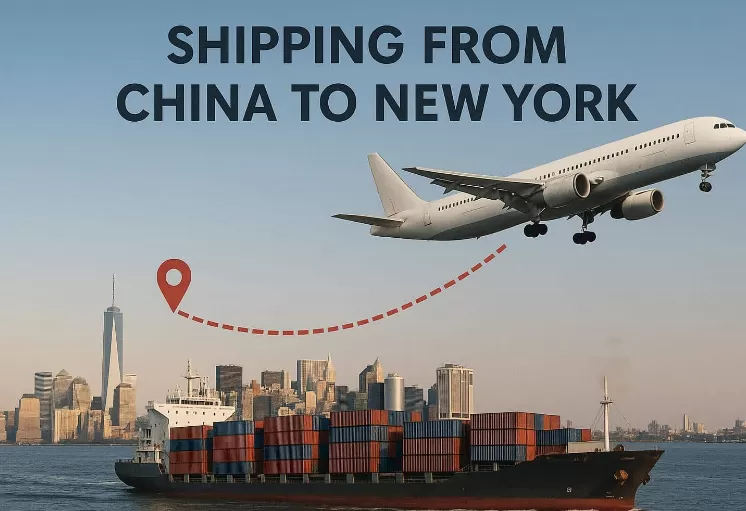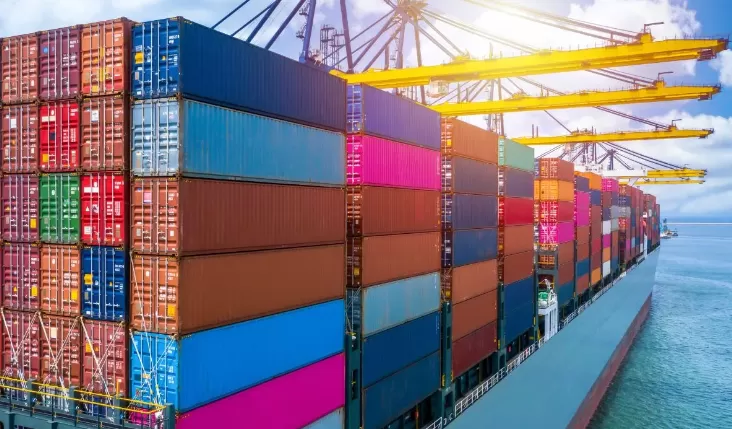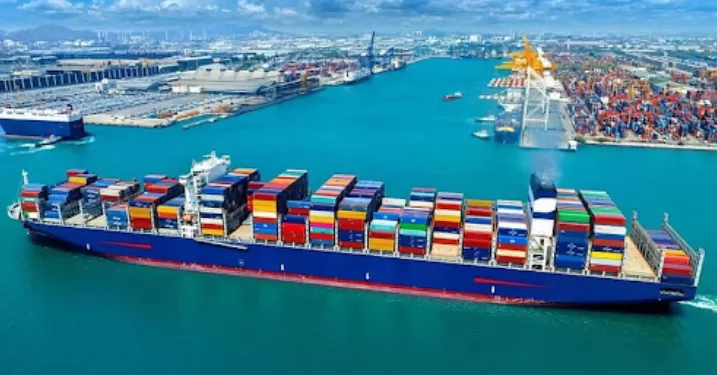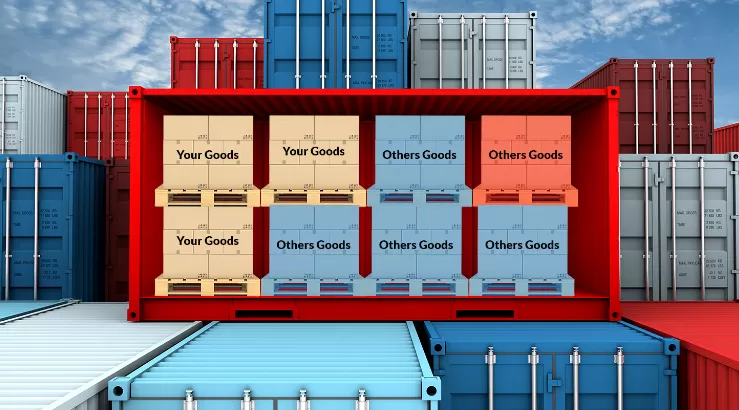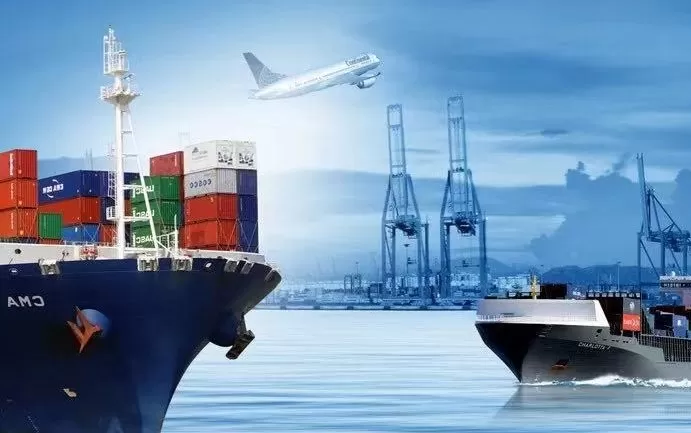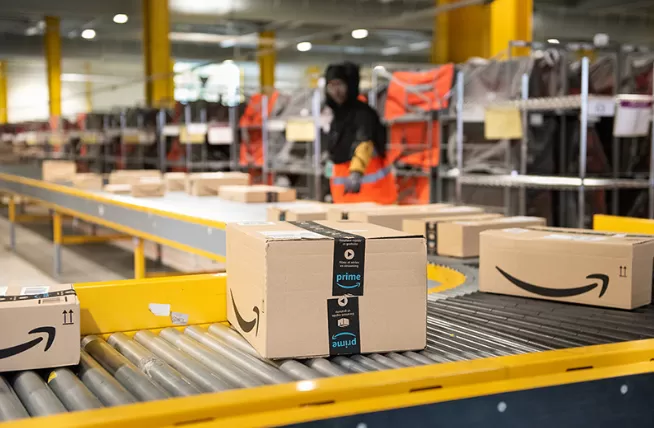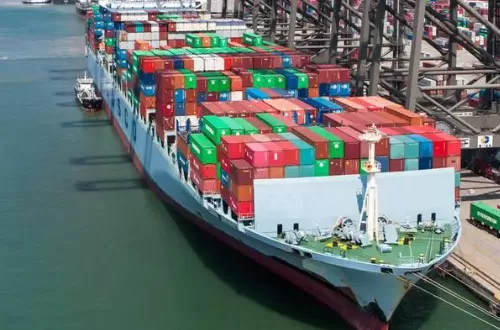This guide focuses on practical steps for Shipping From China To New York, covering import costs, transit times, major routes and port selection, customs clearance and Amazon FBA essentials, plus actionable cost-saving measures and risk-mitigation strategies. Whether you’re an importer, cross-border e-commerce seller, or logistics manager, this article gives you sample rate ranges, sea/air/express comparison tables, an operational checklist, and a straightforward decision workflow to help you control lead times and costs and reduce customs holds and detention risks in the 2025 market environment.
Are you ready?
Get real-time quotes for New York
Get Quotes
Highlights
Ocean (FCL 40') typical spot index ≈ $3,000–$3,500 per 40' to East Coast (FBX index ~ $3,240).
Sea transit: 20–45 days (route, transshipment, port choice matter). Air: 3–10 days. Express: 1–3 days.
Airfreight ballpark: $3.5–$6.0 / kg for China → North America (varies by carrier, season and product). Freightos shows lane averages around $5.30/kg China→North America.
High-level solution: use FCL for cost efficiency, air for urgent inventory, express for samples/urgent docs; consider intermodal (sea + truck) for reliability.
Market signals (2024–2025): air cargo demand rose in 2024; ocean rates have been volatile — use sample quotes and FBX index as decision inputs.
Shipping to NYC: Cost & Time Snapshot (2025 Reference)
| Shipping Method |
Typical Cost (USD) |
Door-to-Door Time |
Best For |
| Express (DHL/UPS/FedEx) |
$8 – $15 / kg |
1 – 3 days |
Documents, urgent samples, very small parcels |
| Air Freight |
$3.5 – $6.0 / kg |
5 – 10 days |
High-value, urgent inventory, electronics |
| Sea-Air Hybrid |
$8 – $12 / kg |
18 – 28 days |
Faster than ocean, cheaper than pure air |
| LCL (Ocean) |
$100 – $180 / CBM |
35 – 50 days |
Smaller shipments (<15 CBM) |
| FCL 40' (Ocean) |
$3,000 – $3,500 / container |
28 – 45 days |
Large volumes, lowest cost per unit |
Important Notes:
Costs are estimates: All rates are volatile and subject to change based on fuel, season, demand, and specific cargo details.
Total Landed Cost: Remember to factor in additional costs like customs duties, insurance, and drayage fees (especially for NYC metro deliveries).
Peak Season Impact: Rates can increase significantly (by 30-100%+) during Q4 holiday season (Oct-Jan).
Table of Contents
Table of Contents
Overview: What Importers Need
🚢 vs ✈️ vs ⚡ Mode Comparison Table
Transit Times & Typical Cost Data
Customs, Docs & Amazon FBA Essentials
Major US Ports & Airports Guide
Case Study: SME Electronics Importer to NYC
Top Risks & Actionable Mitigation Strategies
Expanded FAQ
Related Routes & Resources
The Ultimate Guide to Shipping Freight from China to New York / New Jersey (NY-NJ)
This guide breaks down everything you need to know about shipping from China to the New York/New Jersey area. We’ll cover all the main methods—by air, by sea, full container, groupage—and walk through how they work, realistic timelines, and what to watch out for.
Part 1: The Basics – How It Works & What Can Go Wrong
Before you pick a shipping method, it’s key to understand the steps that are always involved and the common headaches.
The Standard Door-to-Door Process:
No matter how it travels, getting your goods from factory floor to warehouse door usually follows these steps:
Origin Handling: Your goods are picked up, export customs are cleared, and the main transport documents are prepared (Air Waybill for air, Bill of Lading for ocean).
Main Leg: The long-haul journey, either by plane or ship.
Destination Customs Clearance: When the shipment arrives in the U.S., it’s presented to Customs (CBP) for inspection and release. Getting the HS Code right is critical—it determines your duty rate and if your goods get stuck.
Final Delivery: Once cleared, a local trucker delivers it to your door. If that door is in downtown NYC, be ready for extra rules, fees, and appointment schedules.
Common Risks & How to Avoid Them:
Customs Hold-Ups: Inaccurate or mismatched paperwork (commercial invoice, packing list) is the biggest cause. Wrong HS codes or product values will get your shipment flagged.
Peak Season Chaos: From October through January, everything slows down—ships, planes, trucks, and warehouses. Book your space early.
Spiking Costs: Ocean freight rates, fuel surcharges, peak season fees, and local drayage trucking rates can change weekly. Get a detailed breakdown of all costs before you commit.
Part 2: Your Shipping Options Explained
Ocean Freight: Full Container Load (FCL)
Best for: Large shipments (usually >15 CBM) where you want the lowest cost per unit.
Routes & Realistic Timelines:
| Port of Loading (China) |
Major Regions Served |
Port of Discharge (NY) |
Ocean Transit Time |
Typical Door-to-Door |
| Shanghai |
Yangtze River Delta (Electronics, Machinery, Apparel) |
Port of NY/NJ (Newark/Elizabeth) |
20-28 days (direct) |
28-38 days |
| Ningbo |
Zhejiang (General Merchandise, Home Goods) |
Port of NY/NJ |
22-30 days (direct) |
30-40 days |
| Shenzhen (Yantian/Shekou) |
Pearl River Delta (Consumer Electronics, Goods) |
Port of NY/NJ |
22-35 days (may transit) |
30-45 days |
| Guangzhou (Nansha) |
Pearl River Delta (Furniture, Commodities) |
Port of NY/NJ |
25-38 days |
35-48 days |
| Qingdao/Tianjin |
Northern China (Appliances, Machinery) |
Port of NY/NJ (often via transit) |
28-40 days |
38-52 days |
FCL LCL
Get real-time quotes for New York
Get Quotes
The FCL Lowdown:
Booking & Loading: Book 2-3 weeks ahead. When loading at the factory, you must get the VGM (Verified Gross Mass) right. It’s a safety rule—get it wrong and you’ll get a fine.
Free Time: You get a limited number of days (usually 7-10) to use the container for free before steep daily fees (called Demurrage and Detention) kick in. Load and unload fast.
Drayage is Key: This is the truck trip from the NY/NJ port to your local warehouse. During busy seasons, truckers are booked solid. If you don't have an appointment, you'll pay just to wait.
Know the Market Rate: Check a spot rate index (like the FBX China-East Coast index) to see if your freight quote is in the ballpark.
Ocean Freight: Less than Container Load (LCL)
Best for: Smaller shipments that don’t fill a container (typically <15 CBM).
How It Works & Timing:
Process: Your cargo goes to a consolidation warehouse → A consolidator packs it with other shippers’ goods into one container → Ocean voyage → Container is un-packed (deconsolidated) at NY/NJ port → Customs clearance → Final delivery.
Timeline: The extra packing and unpacking steps add time. Door-to-door is usually 35-50 days, about 5-10 days slower than FCL.
The LCL Reality Check:
How You're Charged: You pay per cubic meter (CBM) or per ton—whichever is higher. Watch out for add-on fees for paperwork and handling.
More Hands, More Risk: More handling means a higher chance of mix-ups, damage, or pilferage. Do not skip cargo insurance.
Pick Your Partner Carefully: You’re sharing a container with others. If another shipper’s paperwork is wrong or they’ve shipped something hazardous, your goods can be held up too. Use a reputable consolidator.
Air Freight
Best for: High-value, urgent goods like samples, emergency stock, or electronics.+
Routes & Realistic Timelines:
| Origin Airport (China) |
Major Regions Served |
Destination Airport (NY) |
Flight Time |
Typical Door-to-Door |
| Shanghai (PVG) |
Yangtze River Delta |
JFK / EWR |
1-2 days (direct) |
5-10 business days |
| Shenzhen (SZX) |
Pearl River Delta |
EWR / JFK |
1-2 days (direct/stop) |
5-10 business days |
| Guangzhou (CAN) |
Pearl River Delta |
EWR / JFK |
1-3 days (may transit) |
6-11 business days |
| Beijing (PEK/PKX) |
Northern China |
EWR / JFK |
1-3 days |
5-11 business days |
The Air Freight Details:
Which Airport? Newark (EWR) is a major cargo hub. It’s often more efficient for freight than JFK. Tell your forwarder your final address—it affects the trucking cost from the airport.
Decoding the Quote: A good quote should break down: Air freight charge, Fuel Surcharge, Origin Handling Fee, Destination Handling Fee, Customs clearance, and Delivery fee.
Peak Season is Wild: During holiday rushes, space sells out and prices skyrocket. You need to book far ahead or pay a premium for guaranteed space.
Sea-Air Freight
Best for: Goods that need to be faster than ocean but cheaper than pure air.
How It Works & Timing:
The Route: Goods are shipped by ocean to a West Coast port (e.g., LA/Long Beach). They’re cleared, then put on a domestic U.S. flight to New York (JFK/EWR), before final delivery.
Time & Cost: Total transit is a middle ground (around 18-28 days). Cost is typically 50-70% of a pure air shipment.
Heads-Up:
Who's Responsible? The journey has two different legs with different carriers. Make sure your freight forwarder is clearly on the hook for managing the entire process and any claims.
Ocean + Truck (Intermodal / Sea-Truck)
What it is: This is essentially the final delivery step for an FCL shipment. For NYC, it most commonly means a truck (drayage) picking up your container from the Port of NY/NJ and driving it to your warehouse.
What to Know:
The Route: Sometimes, to avoid East Coast port congestion, your container might be offloaded at a southern port (like Savannah) and brought to NYC by train or truck. This might save on ocean cost but adds time and cost to the land portion.
City Delivery: Deliveries into Manhattan and other boroughs face strict truck size rules, time windows, and congestion fees. These “metro area” and "appointment" fees need to be factored in upfront.
Part 3: For Amazon FBA Sellers
Your To-Do List:
Create the Plan: In Seller Central, create your shipping plan to get your assigned FBA warehouse address (usually in New Jersey).
Pack to Spec: This is non-negotiable. Follow Amazon’s rules exactly for labeling (FNSKU, box labels), palletizing (materials, height, wrapping), and providing box content info.
Send a Test Shipment: Before you send a full container, do a small test shipment by air. It’s worth it to confirm your labels and process work.
Send Info Ahead: Your freight forwarder must send the advanced shipping notification (ASN) to Amazon before your shipment arrives.
NYC Area Tip:
Most FBA warehouses are in NJ, so drayage trucking is a must. Factor in time to get the container out of the port and to the warehouse.
If your shipment isn’t 100% compliant, Amazon will reject it. You’ll then face hefty rejection fees and costly delays to fix the problems.
Main US ports & airports used for China → New York shipments
Major seaports (commonly used for US imports):
Los Angeles (LA) — West Coast gateway (for West/central U.S. via intermodal)
Long Beach (LB) — adjacent to LA, huge capacity
New York / New Jersey (NY/NJ) — primary East Coast reception for New York metro
Houston (HOU) — Gulf Coast gateway for south/central U.S.
Savannah (SAV) — fast-growing East Coast gateway with strong volumes
Major airports used for air cargo:
LAX (Los Angeles)
JFK (New York)
ORD (Chicago O’Hare)
ATL (Atlanta)
Choosing East Coast (NY/NJ/SAV/HOU) vs West Coast (LA/LB) affects drayage, transshipment and inland transport costs — see FAQ below for guidance.
Case study — SME importer (electronics components) to New York
Background: Small electronics OEM in Shenzhen, weekly replenishment to NYC warehouse, SKU value medium-high, reorder lead-time critical.
Plan executed:
Mode: Air freight for critical SKUs; FCL sea monthly for bulk.
Air routing: PVG → JFK, consolidate 2–3 SKUs per AWB, door delivery to bonded warehouse.
Sea routing: 40' FCL Shenzhen → Ningbo → transload to vessel to NY/NJ, scheduled monthly.
Results (typical numbers):
Air cost per kg (average): $4.8/kg (saved stockout cost of ~ $10k/month).
Sea cost per 40' (spot/contract mix): averaged $3,200/40' for the year (used FBX as benchmark).
Inventory turns improved; stockouts fell 85% after hybrid model.
Takeaway: SMEs with mixed demand should combine monthly FCL with tactical air for replenishment — re-evaluate monthly with live quotes.
Risks, seasonal issues & practical tips
Top risks
Peak-season congestion (pre-holiday) — carriers fill early; book earlier.
Tariff or trade-policy changes — monitor regulatory news (can rapidly change landed cost).
Customs hold or missing docs — causes delays and demurrage.
Unexpected surcharges (PSS, congestion surcharges, detention/demurrage).
Practical tips
Lock a portion of capacity under contract if you need predictability.
Use FBX / Freightos and at least two forwarders to get live comparative quotes.
Include freight insurance for sea shipments (named-perils or all-risk depending on product).
Keep a customs broker on retainer for faster clearance.
For Amazon FBA, pre-clear small test shipments to confirm compliance before bulk.
Ocean Freight Solutions
Get real-time quotes for New York
Get Quotes
FAQ
Q1: How do NYC drayage fees impact total costs?
A: Drayage (port-to-warehouse trucking) adds 200−800/container in NYC. Factors:
Manhattan/Brooklyn deliveries: +25% fees for time-window permits
Peak season: Wait times can double costs (e.g., $1,000 for 48hr delays)
Mitigation: Pre-book drayage 14+ days ahead via platforms like Dray.com.
Q2: When does Sea-Air become cost-effective?
A: Optimal when:
Urgency: 18-28 days needed (vs. 35+ days for pure ocean)
Budget: 8−12/kg(vs.4-6/kg ocean, $15-20/kg pure air)
Example: $50K electronics shipment saves 40% vs. air, arrives 3 weeks faster than ocean.
Q3: How to handle Amazon FBA label rejections?
A: If 5%+ boxes are rejected:
Immediate fix: Pay Amazon $40/box relabeling fee
Prevention: Use AI tools like SkuVault for auto-label verification
Testing: Ship 10-sample boxes via express before bulk (cost: ~$200).
Q4: What’s the penalty for VGM (container weight) errors?
A: NY/NJ ports impose:
First offense: $5,000 fine + 72hr hold
Repeat: $12,500 + blacklist risk
Solution: Use certified scales at factories; document with photo evidence.
Q5: Can I bypass congested ports for NYC deliveries?
A: Yes, via:
Savannah workaround: Save 15% on ocean rates, add 7-10 days inland rail
Canadian alternatives: Ship to Montreal + truck to NYC (saves $800/container in peak season)
Trade-off: 10-14 extra days; ideal for non-urgent goods.
Q6: How to negotiate air freight during holidays?
A: 3 proven tactics:
Block space: Pay 50% deposit 60 days pre-Black Friday
Consolidate: Mix with other shippers for 30% volume discount
Off-peak flights: Use Tuesday/Wednesday departures to cut rates 20%.
Q7: What’s hidden in "all-inclusive" freight quotes?
A: Watch for unbilled:
Port congestion surcharges (120−400/container)
NYC zoning fees (85−220 for limited-hour deliveries)
Action: Demand line-item breakdown; use FBX index to audit.
Q8: How fast can I clear customs with errors?
A: Document fixes add 3-5 business days:
HS code mismatch: 24hrs minimum for refiling
Under-declared value: +48hrs for amended invoices + 5% penalty
Pro tip: Use AI classifiers like Descartes for HS code accuracy.
Q9: When to choose rail vs. truck for inland NY?
A: Rail wins if:
Distance: 500+ miles (e.g., Chicago to NYC)
Cost sensitivity: Saves 35% vs. trucking
Exception: Time-critical goods – trucks are 2-4x faster.
Q10: Can I ship batteries to NYC via ocean?
A: Only under:
UN38.3 certification: Mandatory for lithium batteries
Container segregation: Fireproof partitions required
Cost: +$1,200/container for compliant packaging.
Q11: What’s the peak season surcharge timeline?
A: Critical windows:
Ocean: Aug 15 – Dec 15 (+$1,200/container)
Air: Oct 1 – Jan 10 (+3.50−6.00/kg)
Lock rates: Contract 50% volume pre-July for fixed pricing.
Q12: How to track shipments in real-time?
A: Best tools:
Ocean: SeaRates API (predicts port delays)
Air: FlightStats (live cargo plane tracking)
Integration: Feed data into TMS like MercuryGate for alerts.
Related Routes
Shipping from China to Los Chicago
Shipping from China to Los Angeles
Shipping From China To Arizona

 EN
EN
 FR
FR
 ES
ES
 JA
JA
 PT
PT
 RU
RU
 AR
AR
